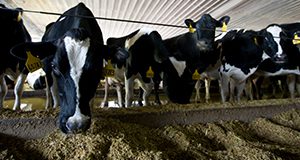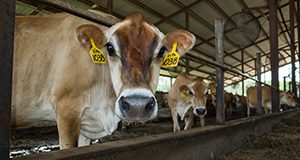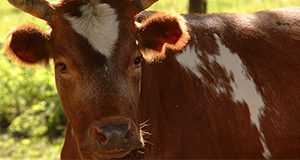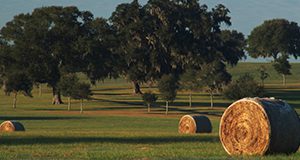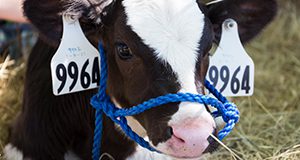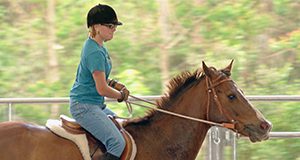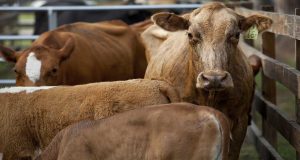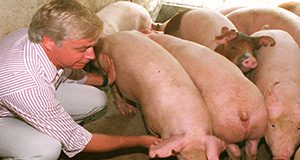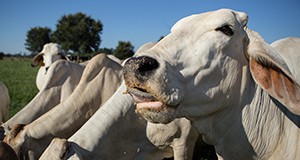This 6-page document provides a list of common hazards to consider in the manufacturing of cattle feeds. It discusses the importance of preventing hazards, methods of prevention, and common physical, biological, and chemical hazards. Written by Taylor Langford, Matthew Hersom, Luiz Ferraretto, Antonio Faciola, Chad Carr, and Jason Scheffler, and published by the UF/IFAS Department of Animal Sciences, March 2018.
http://edis.ifas.ufl.edu/an343
Tag: Animal Sciences Department
Economic Feasibility of Cooling Dry Cows: Findings and Spreadsheet
The negative effects of heat stress in lactating cows are well known, but only recent studies have explored those effects along with the full benefits of cooling dry cows. Recent work at the University of Florida has demonstrated the benefits of dry cow cooling on calf performance and cow health in the next lactation. This 5-page fact sheet discusses the economic losses from milk production due to heat stress, investment, utilities, maintenance, and feasibility analysis. Written by Fernanda Ferreira, Geoffrey Dahl, and Albert De Vries, and published by the UF/IFAS Department of Animal Sciences, March 2018.
http://edis.ifas.ufl.edu/an342
The Florida Bull Test 2016-2017
The 17th annual Florida Bull Test Sale was held on January 21, 2017 at the conclusion of the 2016-2017 Florida Bull Test. The test evaluated the performance potential and breeding soundness of bulls consigned to the program at the UF/IFAS North Florida Research and Education Center (NFREC). This new 9-page fact sheet discusses test procedures, assessment of feed efficiency, test rules and regulations, health requirements, and test results. Written by Luara B. Canal, G. Cliff Lamb, and Nicolas DiLorenzo, and published by the UF/IFAS Department of Animal Sciences, February 2018.
http://edis.ifas.ufl.edu/an341
Effective Use of Genomics in Commercial Dairy Farms
Genomic selection refers to selection decisions based on genomic-estimated breeding values. These genomic breeding values are calculated using genetic markers across the entire genome. This technology has revolutionized dairy cattle breeding globally. This new 4-page fact sheet discusses the effects of genomics on dairy sire selection. Written by Francisco Peñagaricano, and published by the UF/IFAS Department of Animal Sciences, February 2018.
http://edis.ifas.ufl.edu/an340
How Much Does Bad Hay Cost a Beef Cattle Producer?
Everyone likes a good bargain, but when it comes to hay, low price often equates to low nutritional value. Because hay is often sold on a large round-bale basis, savings from the good bargain can decrease substantially if there is a negative impact on the cow herd nutritional program. This 4-page fact sheet discusses intake limitations, energy limitations, protein limitations, examples of hay quality, and bad hay’s impact on cow body condition. Written by Matt Hersom and Todd Thrift, and published by the UF/IFAS Department of Animal Sciences, February 2018.
http://edis.ifas.ufl.edu/an339
Economic Value of Genetic Merit of Dairy Semen
Attempts to calculate the economic value of semen have been made since at least the 1970s. The basic calculations have since become available (Dechow 2016). This new 3-page fact sheet reviews these calculations, adds a few other considerations, and offers estimates of the worth of the genetics of dairy semen. Written by Albert De Vries, and published by the UF/IFAS Department of Animal Sciences, January 2018.
http://edis.ifas.ufl.edu/an338
Basic Concepts of Dairy Sire Selection
Sire selection is one of the most important decisions that a dairy producer makes. It represents a great opportunity to improve the profitability of the dairy production enterprise. This new 3-page fact sheet reviews some key concepts that should be considered in order to make proper selection decisions and discusses alternative methods for selecting sires based on multiple traits. Written by Francisco Peñagaricano, and published by the UF/IFAS Department of Animal Sciences, January 2018.
http://edis.ifas.ufl.edu/an337
Nutrition at Early Stages of Life Determines the Future Growth and Reproductive Performance of Dairy Calves
For a calf, nutrition during the first few months of its life may permanently change the way organs develop and then have long-term consequences. The concept that metabolic imprinting may permanently affect animal development has substantial economic implications for agriculture. This 6-page fact sheet summarizes some of the research conducted in calf nutrition and its impact on the growth and reproductive performance of dairy calves. Written by Philipe Moriel and Luiz Ferraretto, and published by the UF/IFAS Department of Animal Sciences, December 2017.
http://edis.ifas.ufl.edu/an336
Nutrition at Early Stages of Life Determines the Future Growth and Reproductive Performance of Beef Calves
 Nutrition can influence future health and performance of calves. The metabolic imprinting concept has substantial economic implications for animal agriculture, and it should be explored to improve the performance of animals bred for food production. This 6-page fact sheet summarizes some of the research conducted in beef calf nutrition and nutritional impact on growth and reproductive performance of beef calves. Written by Philipe Moriel, and published by the UF/IFAS Department of Animal Sciences, October 2017.
Nutrition can influence future health and performance of calves. The metabolic imprinting concept has substantial economic implications for animal agriculture, and it should be explored to improve the performance of animals bred for food production. This 6-page fact sheet summarizes some of the research conducted in beef calf nutrition and nutritional impact on growth and reproductive performance of beef calves. Written by Philipe Moriel, and published by the UF/IFAS Department of Animal Sciences, October 2017.
http://edis.ifas.ufl.edu/an335
Additional Nutritional Considerations for Preconditioning Beef Calves
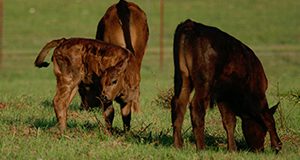 Feed ingredient selection is not the only factor to consider during a preconditioning process. Recent studies demonstrated that diet composition and frequency of supplementation can have positive or negative effects on calf performance during preconditioning. This 7-page fact sheet focuses on the ways beef cattle producers can modify the nutritional composition of diets and frequency of concentrate supplementation to optimize growth and immunity of preconditioning beef calves or prevent detrimental effects. Written by Philipe Moriel, and published by the UF Department of Animal Sciences, September 2017.
Feed ingredient selection is not the only factor to consider during a preconditioning process. Recent studies demonstrated that diet composition and frequency of supplementation can have positive or negative effects on calf performance during preconditioning. This 7-page fact sheet focuses on the ways beef cattle producers can modify the nutritional composition of diets and frequency of concentrate supplementation to optimize growth and immunity of preconditioning beef calves or prevent detrimental effects. Written by Philipe Moriel, and published by the UF Department of Animal Sciences, September 2017.
http://edis.ifas.ufl.edu/an334
Genetic Selection for Gaits in the Horse
Quality and cadence of various locomotion patterns are extremely valuable traits in horses. Breeds like the Tennessee Walking Horse, Florida Cracker Horse, Mangalarga marchador, and Icelandic Pony are prized and selected for unique intermediate-speed locomotion patterns. What if genetics could help us unravel and better select for the locomotion patterns of our horses? This 4-page fact sheet discusses the connection between locomotion patterns and genetics, DMRT3 and locomotion in the horse, improvement of understanding of the gene function of DMRT3, and current as well as future applications. Written by Laura Patterson Rosa, Carissa Wickens, and Samantha A. Brooks, and published by the UF Department of Animal Sciences, May 2017.
http://edis.ifas.ufl.edu/an332
Galloping into the Future: Genetic Tips and Tools for the Horse Owner
This 4-page fact sheet discusses the equine genome, determining the genotype of a horse, breeding for certain traits, and the future of genetic tools. Written by Laura Patterson Rosa, Carissa Wickens, and Samantha A. Brooks, and published by the UF Department of Animal Sciences, May 2017.
http://edis.ifas.ufl.edu/an333
Rumen Protozoa: The Animals within the Cow
As a cow ambles around and eats from the feed bunk, legions of other “animals” are feeding within the cow’s rumen. Billions of protozoa swim about in a single, 20-gallon rumen, colliding with one another while engulfing feed particles and bacteria. These microbes contribute vitally to rumen fermentation and have both positive and negative impacts on animal performance. This 4-page fact sheet discusses classification, activities, removal, and impacts of protozoa. Written by Timothy J. Hackmann, and published by the UF Department of Animal Sciences, January 2017.
http://edis.ifas.ufl.edu/an331
The Florida Bull Test 2015-2016
The 16th annual Florida Bull Test Sale was held on January 16, 2016 at the conclusion of the 2015–2016 Florida Bull Test. The test evaluated the performance potential and breeding soundness of bulls consigned to the program at the UF/IFAS North Florida Research and Education Center (NFREC). This 10-page fact sheet covers the test procedures, assessment of feed efficiency, general policies and procedures, health requirements, test results, and sale summary. Written by Carla D. Sanford, G. Cliff Lamb, and Nicolas DiLorenzo, and published by the UF Department of Animal Sciences, November 2016.
http://edis.ifas.ufl.edu/an328
The Food Safety Modernization Act (FSMA) Preventive Controls for Animal Food
The Food Safety Modernization Act (FSMA) was signed into law in January of 2011 and is considered the most sweeping reform of food safety regulations in 70 years. The human food regulations were composed first and, with significant input from industry, academia, and consumer groups as well as other agencies, were then modified to better suit animal food production. In Florida, these new regulations apply to facilities that manufacture, process, pack, or hold food or food ingredients for animals. These facilities may include pet food manufacturers, renderers, ethanol distillers, feed mills, distributors, and others. The primary goal of these regulations is to ensure safe food for the animals, people who handle the feed, and people who consume the final animal products. This 3-page fact sheet discusses requirements, facilities that will most likely be expected to be in compliance, deadlines, development of a food safety plan, and preventive controls qualified individuals. Written by Jason M. Scheffler and Chad Carr, and published by the UF Department of Animal Sciences, December 2016.
http://edis.ifas.ufl.edu/an330
Pre-Breeding Considerations for the Development of Replacement Beef Heifers
 The efficiency of post-weaning development of heifers has a major impact on the overall profitability of cow-calf operations. To ensure satisfactory performance during the first breeding season, replacement heifers must be subjected to an adequate development program. This 3-page fact sheet covers age at puberty, nutrition, target body weight gain, pelvic area measurements, reproductive tract score, and herd health. Written by Pedro L. P. Fontes, Nicky Oosthuizen, Carla D. Sanford, and G. Cliff Lamb, and published by the UF Department of Animal Sciences, November 2016.
The efficiency of post-weaning development of heifers has a major impact on the overall profitability of cow-calf operations. To ensure satisfactory performance during the first breeding season, replacement heifers must be subjected to an adequate development program. This 3-page fact sheet covers age at puberty, nutrition, target body weight gain, pelvic area measurements, reproductive tract score, and herd health. Written by Pedro L. P. Fontes, Nicky Oosthuizen, Carla D. Sanford, and G. Cliff Lamb, and published by the UF Department of Animal Sciences, November 2016.
http://edis.ifas.ufl.edu/an329
Implications of Round Bale Dimensions on Hay Use
The dimensions of large round bales make a difference in many cases. Bale size determines the amount of hay in a purchased bale, the amount of nutrients in pounds, and the extent of spoilage during storage and feeding. Large round bales, the predominant form of hay made and fed to cattle, are under discussion. This 3-page fact sheet is a new document that examines the significance of bale dimensions, volume, density, and weight as well as the relationship of these factors to hay prices. Written by Matt Hersom, Todd Thrift, and Joel Yelich, and published by the UF Department of Animal Sciences, June 2016.
http://edis.ifas.ufl.edu/an326
The Florida Bull Test 2014/2015
The 2014-2015 Florida Bull Test concluded with the evaluation of 103 bulls. The test assessed the performance potential and breeding soundness of bulls consigned to the program at the UF/IFAS North Florida Research and Education Center (NFREC). This 9-page fact sheet covers the test procedures, feed efficiency assessment, test rules and regulations, health requirements, test results, and sale summary. Written by Carla D. Sanford, G. Cliff Lamb, and Nicolas DiLorenzo, and published by the UF Department of Animal Sciences, June 2016.
http://edis.ifas.ufl.edu/an325
How the Veterinary Feed Directive Affects Cattle Owners
The Veterinary Feed Directive is a federal regulation from the Food and Drug Administration that will change the additives that can be included in animal feed, the ways in which cattle producers manage their animals and veterinarians interact with cattle owners, and the products available for use on the ranch. This 3-page fact sheet provides an overview of the new regulation’s nature, functions, requirements, and implications for cattle owners. Written by Matt Hersom, Todd Thrift, and Joel Yelich, and published by the UF Department of Animal Sciences, July 2016.
http://edis.ifas.ufl.edu/an327
Culling and Replacement Rate in the Beef Cow Herd
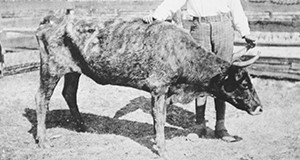 Culling decisions are important to maintain the productivity and profitability of the beef cow herd. Culling of cows from the herd eliminates poorly performing cows, inferior genetics, and cows with quality defects that would limit short- and long-term productivity. This 4-page fact sheet discusses reasons to cull as well as replacement of culled cows. Written by Matt Hersom, Todd Thrift, and Joel Yelich, and published by the UF Department of Animal Sciences, December 2015.
Culling decisions are important to maintain the productivity and profitability of the beef cow herd. Culling of cows from the herd eliminates poorly performing cows, inferior genetics, and cows with quality defects that would limit short- and long-term productivity. This 4-page fact sheet discusses reasons to cull as well as replacement of culled cows. Written by Matt Hersom, Todd Thrift, and Joel Yelich, and published by the UF Department of Animal Sciences, December 2015.
http://edis.ifas.ufl.edu/an323
